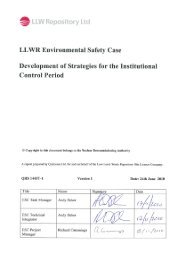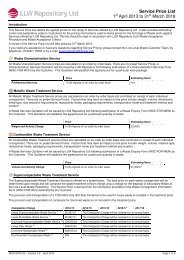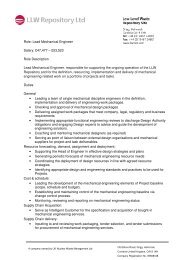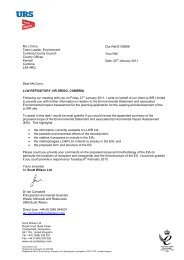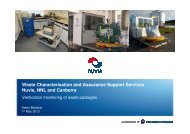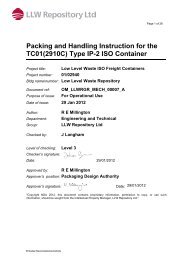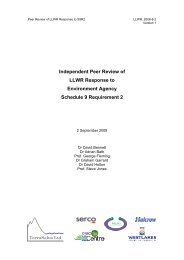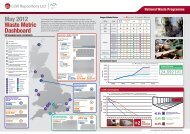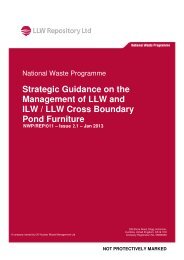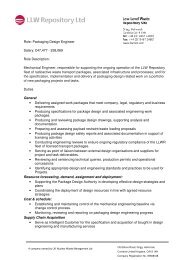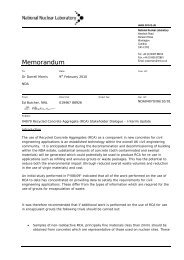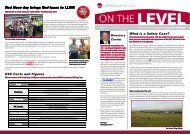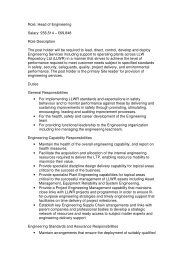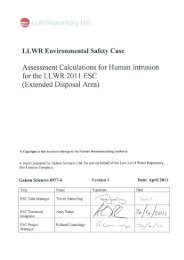Halcrow, Coastal Studies Forward Programme Data Compilation ...
Halcrow, Coastal Studies Forward Programme Data Compilation ...
Halcrow, Coastal Studies Forward Programme Data Compilation ...
You also want an ePaper? Increase the reach of your titles
YUMPU automatically turns print PDFs into web optimized ePapers that Google loves.
stores could prove to be an important process. Therefore, the dunes and shingleridges of Eskmeals are a potential sediment source that could influence the futurebehaviour of the St Bees to Drigg shoreline.2.5 Inheritance and sea-level changeThe ‘inheritance’ describes the impact of former climatic or environmentalconditions on contemporary shoreline processes. In the study area, important pastevents include:Late Devensian glaciation which left large amounts of till and sands andgravels on the seabed and coastal hinterland which have been eroded toform the current beaches. Variation in the sedimentology of materialsmeans that some sediments influence the erosion potential of the coast,and the supply of beach-building sands and gravels. In many areas, thesupply of sediment to the shoreline is prevented by the presence of arailway embankment which was constructed in the late 1840s (such as thatseen adjacent to the Sellafield site). In other locations erosion of thesesediments has left boulder-strewn foreshore platforms (locally known asscars) and resistant headlands in the cliffs. The development of Sabellariaalveolata (worm-rock) reefs formed of very fragile sand casts are also acharacteristic of this shoreline. The reefs are unlikely to have an effect onshoreline evolution in the medium to long-term because they do not formresistant reefs and breakdown. Winter site inspections (Table 1.1) haveconfirmed damage to the ‘worm-rock’ following storm events.Sea-level change since deglaciation (Figure 2.3, Table 2.2). A ‘mid-Holocene’ highstand deposited sediment in raised beaches and estuaries.In many areas of the coast, there is evidence that these potential sedimentsources are being cannibalised. The trend of current sea-level change isunclear, but is assumed to be static to slightly rising based on current UKclimate projections and advice (http://ukcp09.defra.gov.uk/).Based on the foregoing, Table 2.3 provides a conceptual understanding ofHolocene system states, sea-level, sediment budget and shoreline evolution of theLLWR frontage.Doc No 1 Rev 2: Date: May 2010 18



